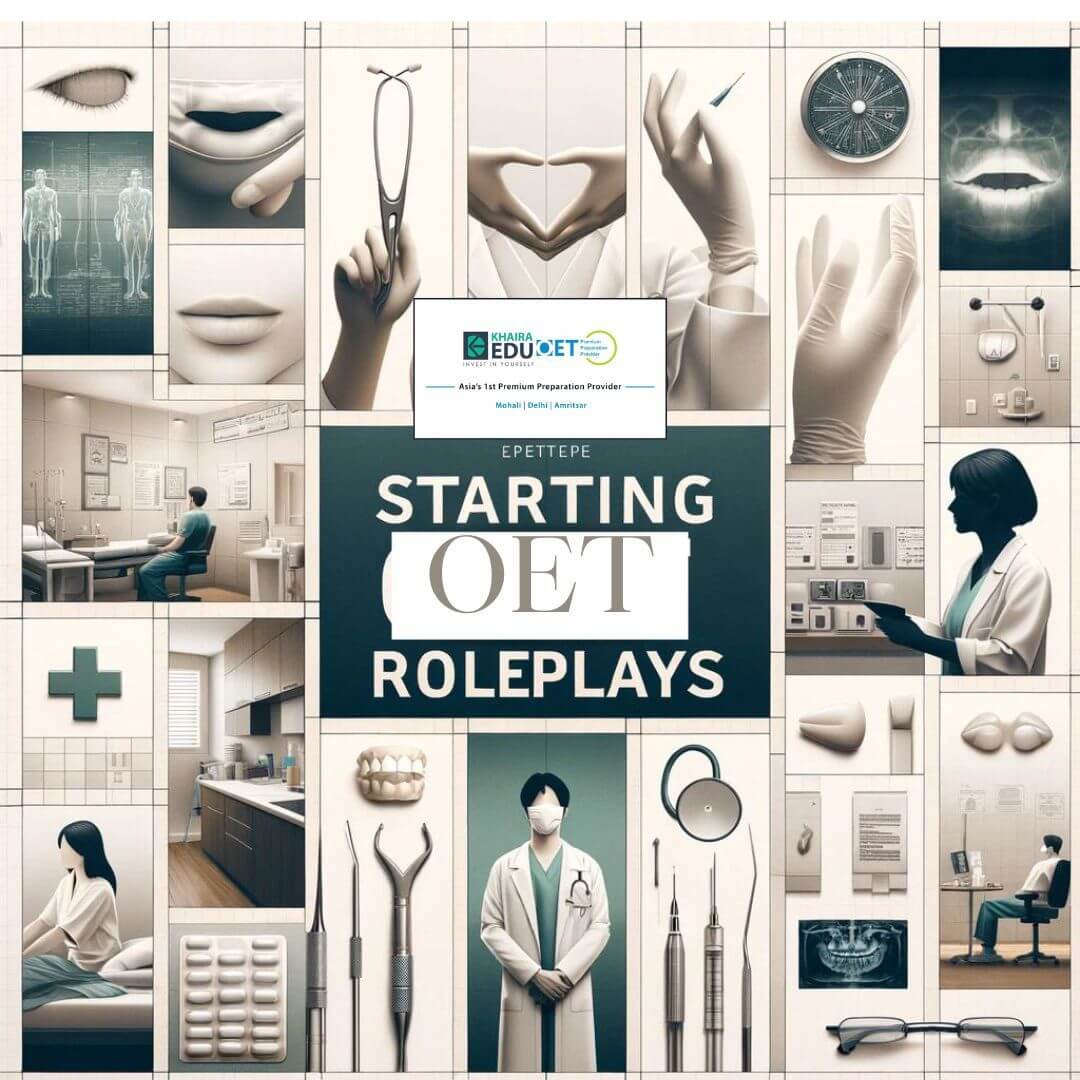Master the art of beginning a role play with our expert guide. Learn how to set a positive tone, establish rapport, and demonstrate competence in OET Speaking tests for healthcare professionals.
Mastering the Art of Starting a Role Play in Healthcare Communication
Starting a role play effectively is pivotal in demonstrating your communication skills as a healthcare professional. The initial interaction not only sets the tone for the entire exchange but also significantly influences your perceived competence, empathy, and politeness. Creating a comfortable and respectful environment is essential for building a strong foundation in clinical communication, a critical aspect of the OET Speaking sub-test.
Preparing for a Successful Role Play
Tailoring Your Introduction
Understanding the context is key. Your opening remarks should be appropriate, considering your familiarity with the patient. Professionalism, courtesy, and empathy must be evident from the start to make the patient feel valued.
The Impact of a Strong Opening
A confident beginning to the 5-minute role play enhances authenticity and relaxes you, allowing your English skills to shine. This approach is corroborated by successful OET Speaking candidates, who noted the realism and positive impact on their performance.
Flexibility in Communication
Adapt your language to mirror a genuine conversation, adjusting for different scenarios. The decision to introduce yourself should be informed by the role-play card’s context. If it’s a first meeting, begin with introductions. Otherwise, delve directly into the consultation.
Enhancing Patient Engagement
Addressing Patients and Relatives
Your approach should vary based on whether you’ve previously met. In emergencies, prioritize concise communication. Using the patient’s first name fosters a connection, but always ask older patients for permission, showing respect.
Proceeding After Initial Examination
If the role play follows an examination, skip introductions and express gratitude for their cooperation, moving smoothly into the consultation phase.
Key Takeaways for OET Speaking Role Play Success
This guide is designed to refine your speaking role play strategy, emphasizing the importance of a well-executed start. By focusing on patient-centered communication, you can build confidence and ensure a successful interaction in your OET Speaking test. analyse for keywords
Implementing What You’ve Learned: Role Play Scenarios in Healthcare Communication
Now that we’ve covered the essentials of starting a role play in healthcare communication, let’s put your knowledge into practice with some exercises. These scenarios are designed to reflect real-life situations you might encounter in a healthcare setting, helping you prepare for the OET Speaking sub-test effectively.
Scenario 1: Hospital Ward
Nurse: You are speaking to a 58-year-old patient who recently underwent an appendectomy. The patient has reported feeling unwell. You’ve just finished conducting a post-operative assessment.
Task: Share the assessment findings with the patient (signs of an infection at the surgical site). Discuss steps for management and care.
Question: How will you initiate this role-play?
A) Good morning, Patricia. I’m Nurse Tina, and I’ll be taking care of you. What seems to be the problem today?
B) Patricia, thank you for letting me examine you. I’ve noticed some indicators of infection at the surgery site, but it’s good we caught it early. Let’s go over the treatment plan to get you healed up.
C) Hello Patricia, I am your nurse for today. I understand you’re feeling unwell after the surgery. Can you describe your symptoms?
D) Hello, I’m Nurse Tina. I have come here to check up on you. Before I proceed further, may I confirm your full name?
Scenario 2: Outpatient Clinic
Doctor: This 52-year-old patient is seeing you today to talk about their symptoms of fatigue and weight gain. You have finished examining the patient. The symptoms are suggestive of type 2 diabetes.
Task: Give the findings of your assessment (indicative of type 2 diabetes, further tests required to confirm the diagnosis).
Question: How will you initiate this role-play?
A) Hello Sam. I am Dr. Carter, your endocrinologist. What brings you here today?
B) Sam, Thank you for your patience. Let’s discuss what the findings indicate and consider our options moving forward.
C) Hello Sam, I am your doctor looking after you today. I see that you have come here with complaints of fatigue and weight loss. Is that correct?
D) Hello, My name is Dr. Carter and I’ll be looking after you today. How may I address you?
Moving Forward
Practicing these scenarios will help you refine your approach to healthcare communication, ensuring you’re well-prepared for the OET Speaking sub-test. For more exercises, insights, and in-depth guidance, check out our suite of courses here: https://khairaeducation.com/oet-course-details/
By focusing on patient-centered communication, you can build confidence and ensure a successful interaction in your OET Speaking test. Remember, the key to success in healthcare communication is not just about medical knowledge but also how effectively you can engage with patients, establishing rapport and trust from the very beginning.






